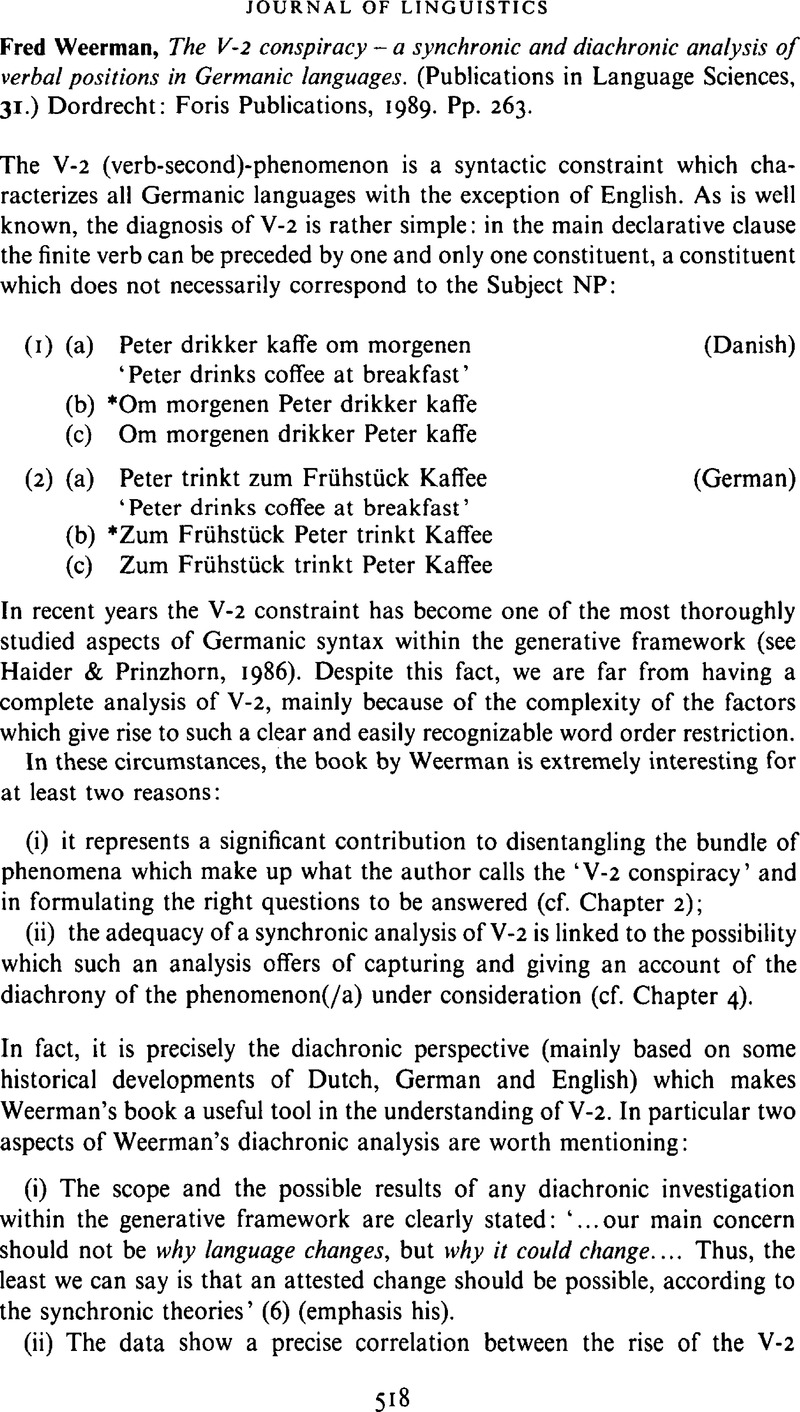No CrossRef data available.
Article contents
Fred Weerman, The V-2 conspiracy – a synchronic and diachronic analysis of verbal positions in Germanic languages. (Publications in Language Sciences, 31.) Dordrecht: Foris Publications, 1989. Pp. 263.
Review products
Fred Weerman, The V-2 conspiracy – a synchronic and diachronic analysis of verbal positions in Germanic languages. (Publications in Language Sciences, 31.) Dordrecht: Foris Publications, 1989. Pp. 263.
Published online by Cambridge University Press: 28 November 2008
Abstract
An abstract is not available for this content so a preview has been provided. Please use the Get access link above for information on how to access this content.

- Type
- Reviews
- Information
- Copyright
- Copyright © Cambridge University Press 1990
References
REFERENCES
Belletti, A. (1989). On the morphosyntactic nature of the sequence ‘Aux + Past Participle’ in Italian. To appear in Nespor, M. & Mascarò, J. (eds), Festschrift for Henk van Riemsdijk.Google Scholar
Besten, H. den (1983). On the interaction of root transformations and lexical deletive rules. In Abraham, W. (ed.), On the formal syntax of Westgermania. Amsterdam: Benjamins. 47–131.CrossRefGoogle Scholar
Evers, A. (1986a). Long rule accessible arguments in French and German. In Coopmans, P. et al. (eds), Formal parameters of Generative Grammar. Dordrecht: Foris. 73–82.Google Scholar
Evers, A. (1986b). Clause Union in French and German. Groninger Arbeiten zur Germanistischen Linguistik 28. 170–201.Google Scholar
Haider, H. & Prinzhorn, M. (eds) (1986). Verb second phenomena in the Germanic languages. Dordrecht: Foris.CrossRefGoogle Scholar
Moro, A. (1988). Per una teoria unificata delle frasi copulari. Rivista di Grammatica Generativa 13. 81–110.Google Scholar
Platzack, C. (1983). Germanic word order and the COMP/INFL Parameter. Working Papers in Scandinavian Syntax 2.Google Scholar
Pollock, J. Y. (1989). Verb movement, universal grammar and the structure of IP. LIn 20. 365–424.Google Scholar
Rizzi, L. (1987). Three issues in Romance dialectology. Talk given at the Xth GLOW Conference, University of Venice.Google Scholar
Roberts, I. (1985). Agreement parameters and the development of English modal auxiliaries. Natural Language and Linguistic Theory 3. 21–58.CrossRefGoogle Scholar
Schwartz, B. D. & Tornaselli, A. (in press). Some implication from German word order. In Abraham, W. & Reuland, E. (eds), Proceedings of the 5th workshop on comparative German syntax. Rijksuniversiteit Groningen, May 19–20, 1988.Google Scholar


